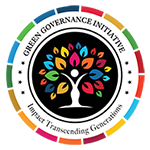Water and sanitation are the most cost-effective health intervention available. One-half of all under-nutrition is caused by lack of access to safe drinking water, sanitation and hygiene. Besides this, the issue of increasing water scarcity and deteriorating quality persists. Currently, more than 2 billion people are living with the risk of reduced access to freshwater resources; by 2050, at least one in four people is likely to live in a country affected by chronic or recurring shortages of freshwater. Therefore, the world's sustained economic growth and productivity are in jeopardy since sustainable management of water resources and full access to safe water and sanitation would remain a challenge in many countries.
Fact And Figures
India has the world's second-largest population but just 4 per cent of potable water. Nearly 600 million Indians face high to extreme water stress; and by 2030, the country's water demand is projected to be twice the available supply, implying severe water scarcity. There is an imminent need to continuously evolve sustainable policies and practices, especially in the current context of adverse climate change, rising demand and environmental degradation and to put in place interventions that make our water use efficient and sustainable.
According to the National Commission for Integrated Water Resource Development, the country's water requirement is likely to be 973 BCM in low demand scenario and 1,180 BCM in high demand scenario by 2050. In contrast, the present-day availability is 695 BCM, and the potential water availability in the country has been estimated to be 1,137 BCM.
The primary groundwater quality issues are salinity and contamination by arsenic, iron, fluoride, and nitrates. An area of about 2 lakh sq.km has been estimated to be affected by salinity with the electrical conductivity rising beyond 4000 µS/cm. Fluoride contamination in groundwater has been found in 184 districts in 19 States; high levels of arsenic contamination in 26 districts of 4 States (Bihar, Chhattisgarh, West Bengal and Uttar Pradesh); high concentration of iron in groundwater in more than 1.1 lakh habitations in the country; and high concentrations of nitrates are found in many districts of 15 States.
Progressing sharply from 38.70 per cent in 2014, when theSwachhaBharatMission was launched, the country has achieved sanitation coverage of 100 per cent in rural India. Close to 6 million villages, 633 districts and 35 States/UTs have been verified to be ODF (open-defecation-free) in December 2019.
600 million
Indians face high to extreme water stress
184 districts
have been found to have fluoride contamination in ground water
100%
sanitation coverage achieved in rural India.

Target
6.1 By 2030, achieve universal and equitable access to safe and affordable drinking water for all
6.2 By 2030, achieve access to adequate and equitable sanitation and hygiene for all and end open defecation, paying special attention to the needs of women and girls and those in vulnerable situations
6.3 By 2030, improve water quality by reducing pollution, eliminating dumping and minimizing release of hazardous chemicals and materials, halving the proportion of untreated wastewater and substantially increasing recycling and safe reuse globally
6.4 By 2030, substantially increase water-use efficiency across all sectors and ensure sustainable withdrawals and supply of freshwater to address water scarcity and substantially reduce the number of people suffering from water scarcity
6.5 By 2030, implement integrated water resources management at all levels, including through transboundary cooperation as appropriate
6.6 By 2020, protect and restore water-related ecosystems, including mountains, forests, wetlands, rivers, aquifers and lakes
6.a By 2030, expand international cooperation and capacity-building support to developing countries in water- and sanitation-related activities and programmes, including water harvesting, desalination, water efficiency, wastewater treatment, recycling and reuse technologies
6.b Support and strengthen the participation of local communities in improving water and sanitation management
Our Team

Riyanka Roy Choudhury
Team Lead SDG 6

Riyanka Roy Choudhury
Team Lead SDG 6
